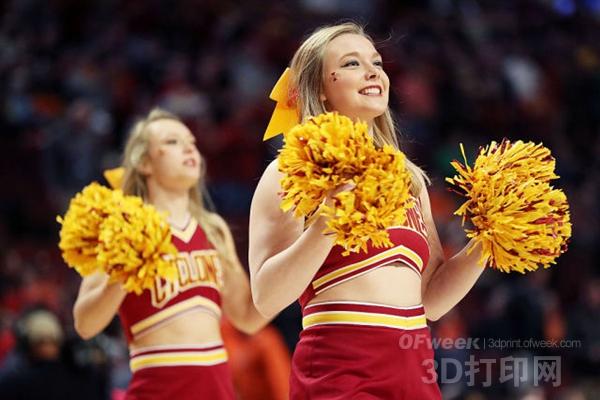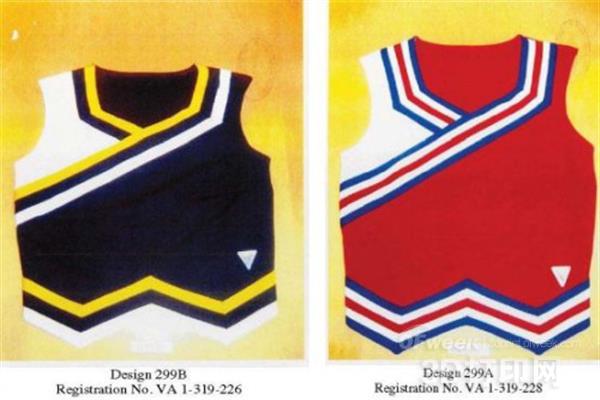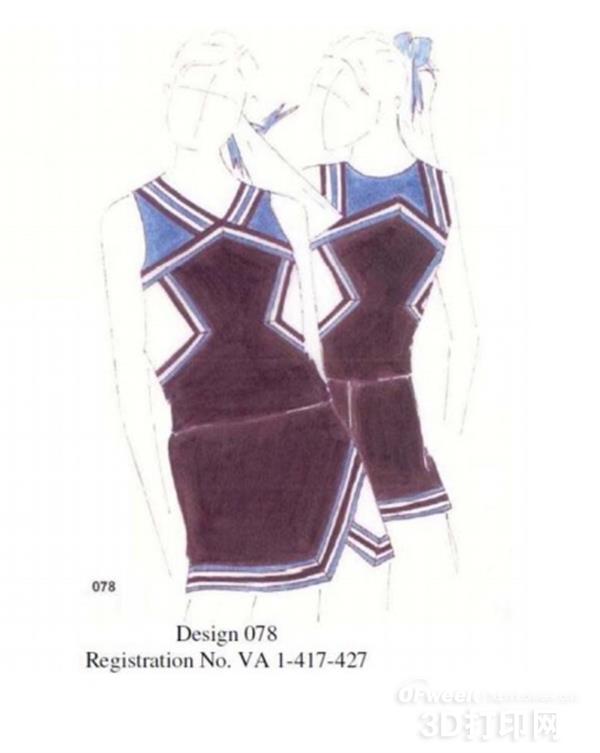3D Printing Company requires the US High Court to clarify the boundaries of copyright content
On May 2, 2016, the US Supreme Court stated that it would hear a case between two cheerleader uniform suppliers to redefine the scope of copyright protection in the country. In 2010, Star Athletica published a catalogue of its first cheerleading uniform, but was sued. Varsity Brands, the world's largest manufacturer of uniforms for cheerleading and dance teams, accused Star Athletica of designing uniforms that infringe Varsity's copyright-protected designs.
The impact of the lawsuit between the two clothing manufacturers has exceeded the fashion field. Recently, three 3D printing companies - Formlabs, Matter and Form and Shapeways have submitted an amicus brief, requesting the High Court to accept the case in order to seek a clear distinction between creative design protected by copyright law and copyright. The functional object of the law protection, as this is very important for defining an increasingly large number of 3D print designs.

Let me briefly introduce the case:
Star believes that Varsity's copyright requirements are based on the functional elements of the uniform and should not be allowed. The United States has never allowed copyright to be granted to "useful articles," a rule that has long included clothing. As a result, Star won the district court, but the US Sixth Circuit Court of Appeal overturned the verdict, which in turn determined that Varsity won. Star then appealed again to the Supreme Court.
In an appeal filed with the Supreme Court, Star stated that the decision of the Court of Appeal “exacerbated the differences in the judiciary and denied the Congress’s accepted deprivation of copyright protection of clothing designs or uniforms, despite the clothing design industry of the past century. I have been lobbying for this."
If the decision of the Sixth Circuit Court of Appeals is not overturned, "the industrial designer can then claim the copyright on the pleats on the tennis skirt, the button patterns on the golf shirts, and the color stripes on the football uniforms. "Star Athletica said.

The Circuit Court, the US Copyright Office and academics created “at least nine different test standards†to separate copyright content from utility. "But the Sixth Circuit Court rejected all of the above nine criteria and created the 10th." Star Athletica's lawyer wrote.
In addition, Star Athletica also complained about Varsity's aggressive strategy, saying the latter has sued or acquired several other competitors. "This result has led to the expansion of the price of uniforms, which has harmed the interests of American families," the appeal said.
Art and function
In two court decisions, the judges of the local courts found it difficult to cut the design of Varsity with the “utility function of the general cheerleading uniformâ€. If you make a dress of the same form, "there is no team color, stripes and chevrons", it will not be considered a cheerleading uniform.

However, the judge of the Court of Appeal disagreed with this view, arguing that Varsity's stripes and herringbone patterns did not have functional functions. "A pure white cheerleading jacket and white skirt will not affect the cheerleading team wearing it cheering, jumping, kicking and flipping." The judge of the second instance wrote: "There is no banner, V-shaped, zigzag or ribbon top and The skirt is still easily identified as a cheerleading uniform."
3D printing company's appeal
Of course, for us, what's more important is why the three well-known 3D printing companies, Formlabs, Matter and Form, and Shapeways, are coming in. In the non-participant statement submitted, the three companies asked the US Supreme Court to provide clear boundaries based on this case to conceptually distinguish what is copyright and what is not.
The statement stated that 3D printing is a revolutionary technology that is changing the industry. However, some objects have clear copyrights, while others do not. There are a lot of gray areas in between. The standard is still unclear.
For example, "purely ornamental and functional" 3D printed objects, such as sculptures and jewellery, are clearly copyrighted; and those "purely functional" designs, like a wrench, are clearly not copyrighted. But a significant percentage of 3D printed objects combine functionality and artistry. To this end, these 3D printing companies want to clarify a standard and let them know what their responsibilities are.
The bamboo has the characteristics of automatic temperature regulation and maintenance, no cooling and heat release, warm in winter and cool in summer.
The texture of bamboo has the function of absorbing ultraviolet rays. Its color is elegant, soft and warm. It is beneficial for population vision and can reduce the occurrence of myopia.
Eco-Friendly Bamboo Water Bottle,Bamboo Lid Water Bottle,Bamboo Sport Water Bottles,Bamboo Glass Water Bottle,Bamboo Sport Bottle with Straw
Ningbo Auland International Co.,Ltd. , https://www.eversportsbottle.com